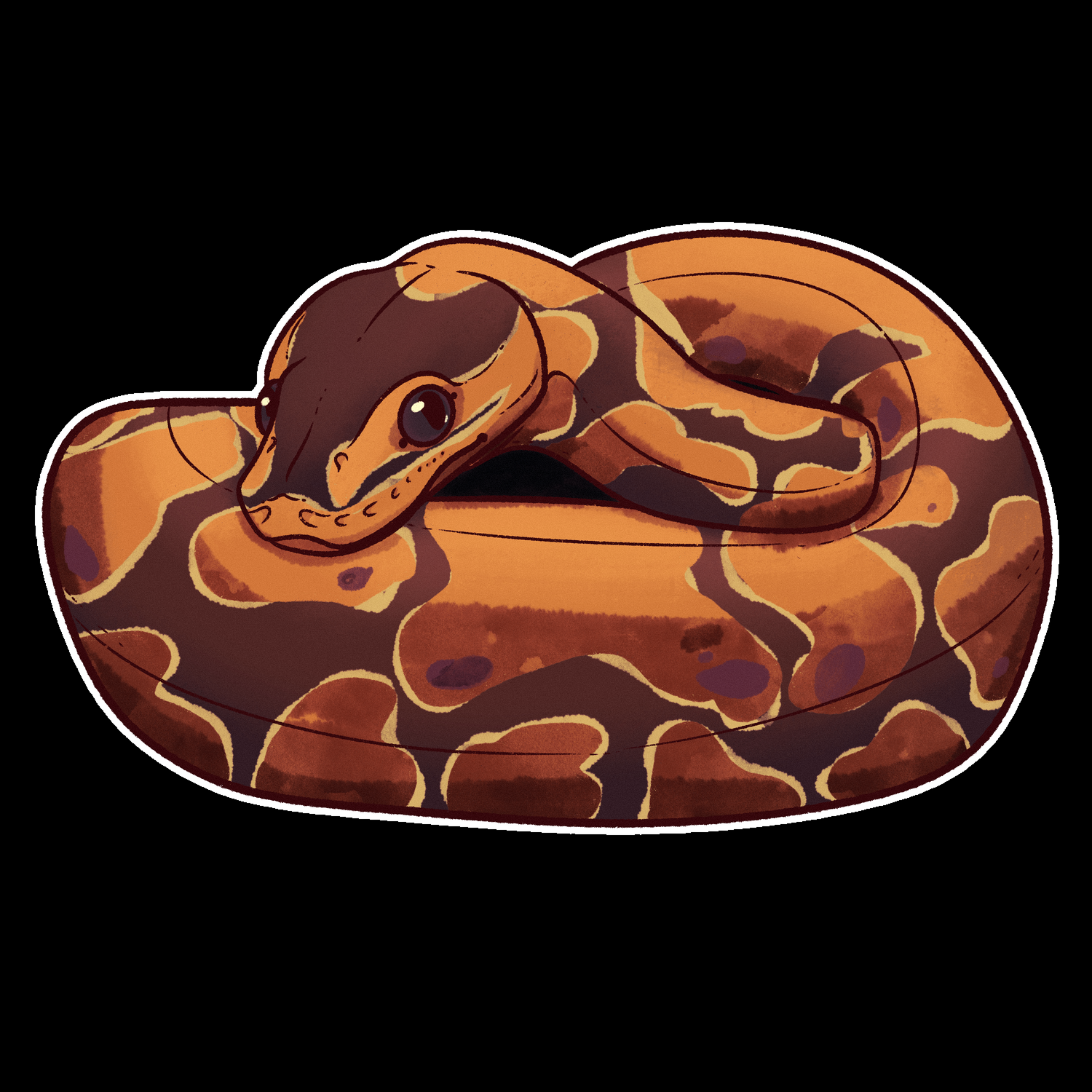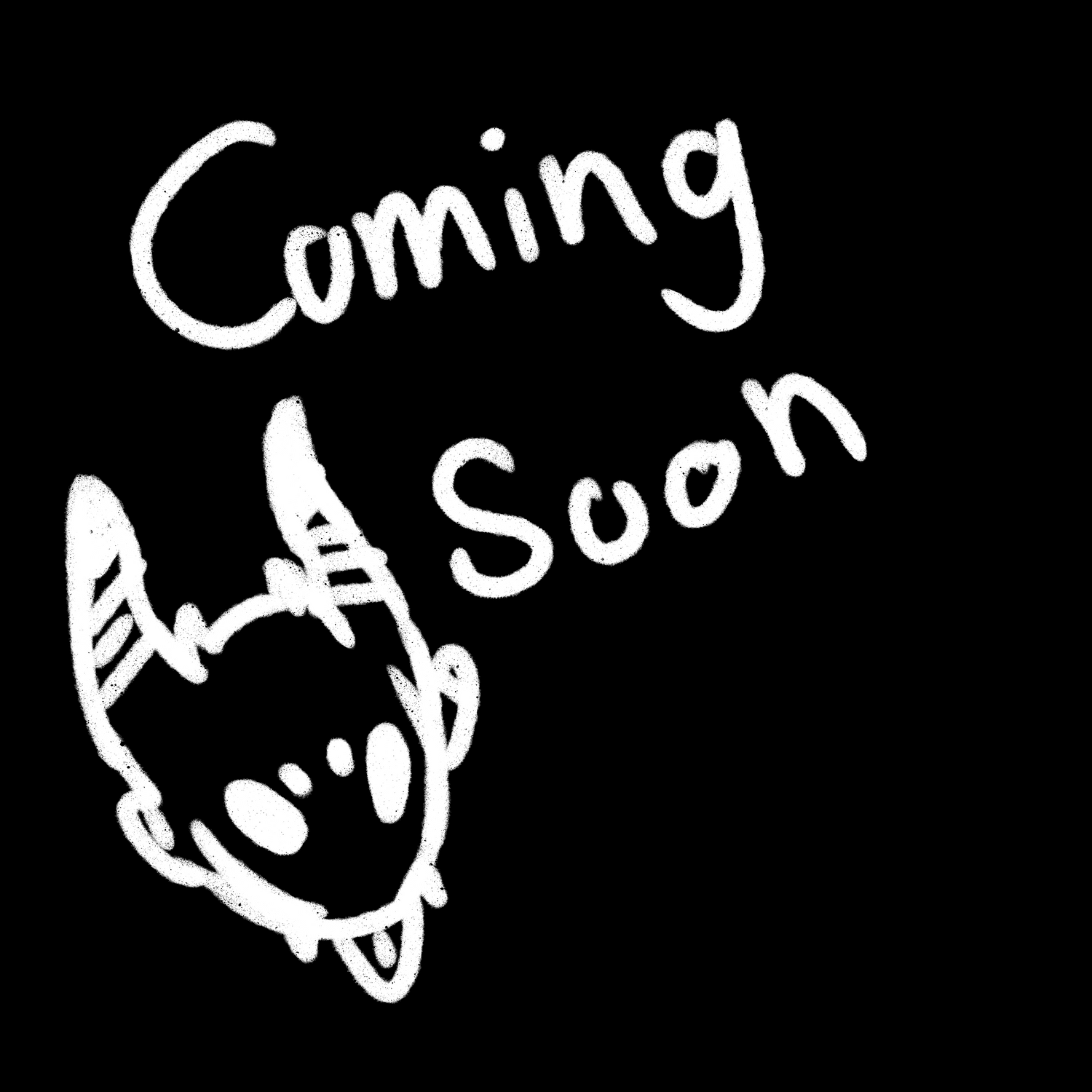Ball Python
Python regius
Ball Pythons or Royal Pythons are a small species of Python native to West and Central Africa. In captivity these Pythons can live up to 20 - 30 years and reach a size of 72 inches. The name 'Ball Python' came from their tendency to roll up in a Ball which is also what made them quite popular as pets as well as their cute faces.

Temperament
Ball Pythons are considered gentle and calm snakes which makes them great for first time snake owners depsite their larger size. These snakes have earned the name 'Pet Rocks' due to their less energetic personalities however every Python is different. Ball Pythons can be observed relaxing in their enclosure or climbing around and exploring as well which is fun to watch as they snake around their environment.
Husbandry
-
Temperature
88 - 92 degrees Fahrenhiet Warm Side
76 - 80 degrees Fahrenhiet Cool Side
72 - 76 degrees Fahrenhiet Night time
Heat can be supplied via a halogen or incandescent bulb on a temperature dimmer to stop over heating. A ceramic heat emitter can be used at night if tempatures fall below 72 degrees Fahrenhiet.
-
Humidity
HIGH - 70 - 80%
Despite what you may think, Ball Pythons need constant high humidity to remain healthy and happy. Humidity can be maintained by having a partially covered lid to trap humidity and a large water bowl for the Python to soak in if it so chooses.
-
Lighting
5% UVB
While UVB is not nescesarliy needed for Ball Pythons it doesn't hurt to supply them with some via a low wattage UVB bulb. The lights should stay on for 12 hours and off for 12 hours.
-
Enclosure
Despite their rather lazy behavior Ball Pythons still need a large enclosure in order to thrive. The enclosure should be made from wood or PVC to ensure proper control and some even use large bins however its not good for viewing. The enclosure should be cluttered with hides and botanticals with sturdy branches for snakes to climb on. The smallest size for adult pythons is 4x2x2 FT.
-
Handling
Ball Pythons are rather friendly which makes building trust quite easy and fun. Pythons may be skittish at first but once they warm up to you they are fun to handle! Start slow and watch for signs of stress in your Python while handling to avoid injury to you or the Python.
-

Feeding your Ball Python
Carnivores

Feeding Schedule
A Ball Python's diet is mainly comprised of Norwat Rats. Feeding frequency depends on the Python's age:
0-12 months - Feed every 7 days
12-24 months - Feed every 14-20 days
24+ months - Feed every 30-40 days
Remember to monitor you Python's weight and adjust accordingly, a Python of a healthy weight will have a clearly defined neck and a smooth taper from body to tail.

Supplement Schedule
When kept on a proper diet Ball Pythons have no need for extra supplements. However it is beneficial to add some variety to their diet from time to time by feeding you Python Quails and Baby Chickens, however Norway Rats should always remain the staple feeder.

Staple Feeders
Ball Pythons only need Norway Rats to thrive. HOWEVER its is strongly reccomended to use frozen/thawed rats as opposed to live to avoid injuring your Python and causing stress.
It is also important to note that the amount fed is based on weight percentages.
0-12 months - Feed 10-15% of the snake's weight
12-24 months - Feed up to 7% of the snake's weight
24+ months - Feed up to 5% of the snake's weight
Sources
All information has been gathered from the following:
Josh's Frogs
Reptifiles
Chicago Exotic Animals Hospital
Morph Market

